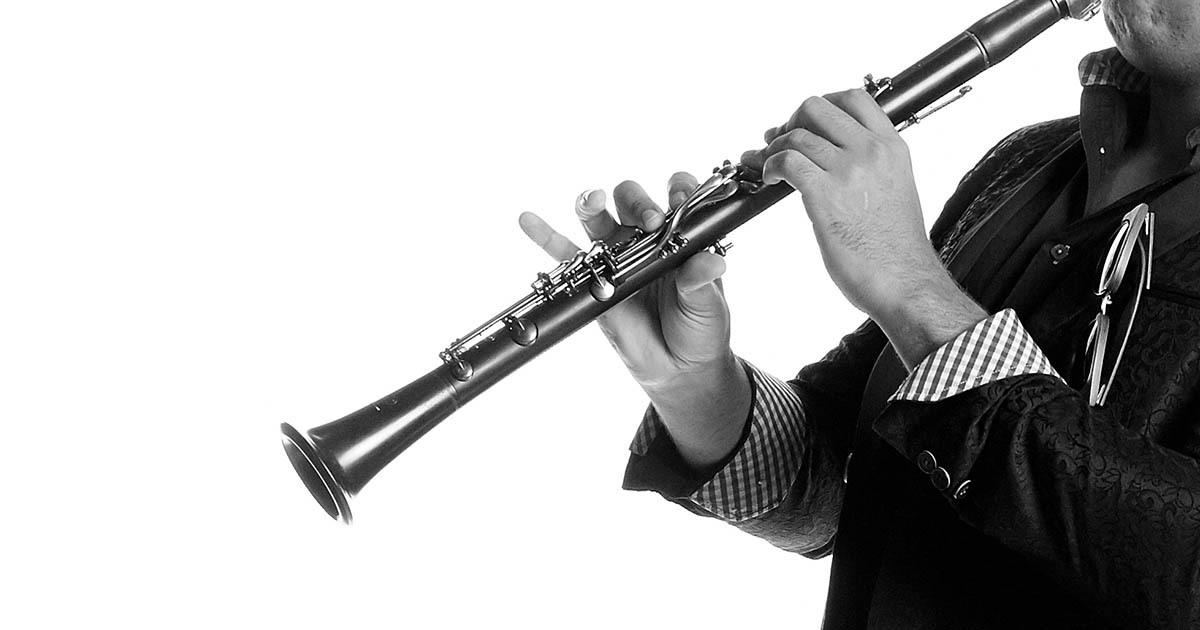The Klezmer Clarinet
by Mitchell Estrin
Date Posted: August 10, 2020

History
The Yiddish word klezmer is defined in the Merriam-Webster Dictionary as, “A Jewish instrumentalist especially of traditional eastern European music.” In Eastern Europe, during the days before the Internet, television, radio, or any mass communications, people would congregate in their villages in the evenings to socialize. They would tell stories, sing and play music, dance, and pass family histories down from generation to generation. If there was any formal education, it was guided by religious leaders and the village elders. Music and musical training were done through listening to the musicians in the village, and the music they performed was strongly influenced by their religious and national origins, as well as the style and inflection of their language. Klezmer musicians would entertain in their villages and also perform ceremonial music for weddings, Bar Mitzvahs, and other celebratory occasions.
In the late nineteenth and early twentieth centuries, there was a great migration of Eastern European immigrants to America. The flood of immigrants came to seek a better life and religious freedom, and they brought their culture and music with them.
Celebrating the Clarinet's Voice
The purpose of this article is to celebrate the clarinet’s special voice in klezmer music. With its prevalence in the villages, wide range of expression, and unique ability to imitate the human voice, the clarinet became the leading instrument in klezmer music. Music and style were learned by ear and passed from one generation to the next through playing music together. There are a number of special extended techniques used by klezmer clarinetists and these techniques are essential to capture the authentic klezmer style. This list includes glissandi, note bends, growling, and imitating the inflections of the human voice.
I have a deep admiration for great klezmer clarinet players. The creativity of their voices and ability to sing a melody is incomparable. The klezmer style features the vocal and expressive qualities of the clarinet in all its glory. The listener will experience a wide range of emotions from joy to sadness and laughter to tears.
I offer you an introductory listening guide to some of the great klezmer clarinet artists who have been recorded over the past century. It is likely many of the earliest recorded klezmer clarinetists used an Albert System C clarinet.
Klezmer Recordings
Naftule Brandwein (1884–1963)
Dave Tarras (1895-1989)
Ray Musiker (b.1927)
Giora Feidman (b.1936)
David Krakauer (b.1956)
Don Byron (b.1958)
Margot Leverett (b. 1958)

About the Author
Mitchell Estrin is Professor of Clarinet at the University of Florida and Music Director and Conductor of the University of Florida Clarinet Ensemble. He is President of the International Clarinet Association and author of the biography Stanley Drucker Clarinet Master published by Carl Fischer. Estrin performed as a clarinetist with the New York Philharmonic for over twenty years in hundreds of concerts and on 19 tours. As an international concert artist, he has performed in 37 countries on 4 continents. As a studio musician, Estrin has recorded dozens of motion picture soundtracks for Columbia Pictures, Walt Disney Pictures, Paramount Pictures, MGM, 20th Century Fox, United Artists, and Warner Brothers on feature films. They include Fargo, Beauty and the Beast, Aladdin, Interview With a Vampire, Home Alone 2, Pocahontas, Doc Hollywood, Regarding Henry, TheUntouchables, and more. His television credits include recordings for ABC, NBC, CBS, CNN, HBO, TBS, and ESPN. Learn more about Mitchell Estrin.